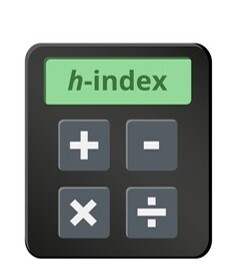أین یمکننی الحصول على ورقه بحثیه منشوره؟


هذه القواعد البیانات تشبه المکتبات العملاقه لورقات البحث. لدیها العدید من المجلات عالیه الجوده من مجالات دراسیه مختلفه. النشر فی مجله مدرجه فی إحدى هذه القواعد البیانات یعنی أن المزید من الأشخاص سیرون أعمالک وسیأخذونها على محمل الجد. لکل قاعده بیانات ترکیزها الخاص. علیک أن تحدد أیها الأفضل لبحثک.
عند اختیار قاعده بیانات لنشر بحثک، یجب أن تنظر إلى العوامل التالیه:
النطاق والترکیز: حدد القاعده البیانات التی تتماشى بشکل أفضل مع موضوع وتخصص بحثک. على سبیل المثال، تعتبر ببمید مناسبه بشکل خاص للنشرات فی مجال الطب الحیوی والعلوم الحیاتیه، بینما تغطی سکوبس وویب أوف ساینس مجموعه أوسع من المجالات الأکادیمیه. فعلى سبیل المثال، یتمیز سکوبس بمجموعه واسعه من المجلات فی الهندسه والعلوم الاجتماعیه والعلوم الإنسانیه، بینما یتفوق ویب أوف ساینس فی العلوم والفنون والعلوم الإنسانیه.
السمعه والتأثیر: ابحث عن المجلات المُدرجه فی هذه القواعد البیانات التی تتمتع بسمعه قویه ومؤشرات تأثیر عالیه، مثل معامل التأثیر، ومعدل الاستشهاد، أو مؤشر h. یمکن أن توفر هذه المؤشرات رؤى قیمه حول جوده المجله وصرامتها وتأثیرها داخل مجتمع البحث. تشیر المجله ذات معامل تأثیر عالی عمومًا إلى أن مقالاتها المنشوره یتم استشهادها بشکل متکرر من قبل الباحثین الآخرین فی المجال، مما یوحی بتأثیر واعتراف أکبر.
الوصول والقراءه: انظر إلى نطاق وصول القاعده البیانات وإمکانیه الوصول إلى جمهورک المستهدف. قد تکون بعض القواعد البیانات لدیها رؤیه أوسع أو جمهور متخصص أکثر یتماشى مع أهداف بحثک. على سبیل المثال، إذا کان بحثک یرکز على تخصص معین ضمن مجال أوسع، قد تفکر فی المجله المُدرجه فی قاعده بیانات تخدم تلک المنطقه المحدده، مما یضمن وصول عملک إلى الجمهور الأکثر صله.
عند اختیار مجله للنشر، من المهم تقییم بدقه مؤشرات المجله وسمعتها. بعض العوامل الرئیسیه التی یجب مراعاتها تشمل:

معامل التأثیر (IF) : معامل التأثیر هو مؤشر شائع الاستخدام یعکس العدد المتوسط للاستشهادات التی تتلقاها المقالات المنشوره فی مجله معینه. یمکن أن یوفر رؤى حول تأثیر المجله وسمعتها داخل المجتمع العلمی. یشیر معامل التأثیر الأعلى عمومًا إلى تأثیر واعتراف أکبر داخل المجال.

معدل الاستشهاد (CiteScore) : معدل الاستشهاد هو مؤشر یقیس العدد المتوسط للاستشهادات التی تتلقاها الوثائق المنشوره فی مجله خلال الفتره الزمنیه الثلاث سنوات السابقه. یمکن أن یکون مکملاً مفیدًا لمعامل التأثیر، مما یوفر رؤیه أکثر حداثه حول تأثیر المجله.

مؤشر h: مؤشر h هو مقیاس لإنتاجیه المجله وتأثیرها، استنادًا إلى عدد المقالات المرتفعه الاستشهاد التی نشرتها. یمکن أن یکون مؤشرًا قیمًا لجوده المجله ومکانتها العامه. یشیر مؤشر h الأعلى إلى أن المجله قد نشرت عددًا کبیرًا من المقالات التی تمت استشهادها على نطاق واسع واعتبرت مؤثره فی المجال.
قبل تقدیم بحثک العلمی إلى مجله، تأکد من أنه یتبع إرشادات الکتاب الخاصه بالمجله. غالبًا ما تشمل هذه المتطلبات متطلبات التنسیق، مثل هیکل المخطوطه، ونمط الاقتباس، وأی تنسیق محدد للرسوم البیانیه، والجداول، أو المواد الإضافیه. یضمن اتباع هذه الإرشادات بعنایه أن یلبی بحثک معاییر المجله ویزید من احتمال قبوله للمراجعه.
بمجرد أن تعد بحثک وفقًا للإرشادات، ستحتاج إلى الانتظار لاتخاذ فریق التحریر فی المجله قرارًا بشأن قبول أو رفض تقدیمک. فی بعض الحالات، قد تطلب المجله تعدیلات على بحثک قبل اتخاذ قرار نهائی. هذه ممارسه شائعه ولا ینبغی اعتبارها فشلًا، بل فرصه لتحسین عملک وزیاده فرص قبوله. من المهم أن تکون مستعدًا لهذا الاحتمال وأن تکون مستعدًا لاستقبال التغذیه الراجعه من المراجعین.

تذکر: النشر فی المجلات عالیه الجوده والموثوقه خطوه حاسمه فی نشر أبحاثک وتقدم مسیرتک الأکادیمیه أو المهنیه. من خلال اختیار قاعده البیانات والمجله المناسبه بعنایه، وتحضیر بحثک وفقًا للإرشادات، یمکنک زیاده احتمال قبول عملک ونشره.
هل أنت جاهز لرفع بحثک إلى المستوى التالی ونشره فی مجله من الدرجه الأولى؟ یمکن لسیتا مساعدتک فی التنقل فی تعقیدات التنسیق والتقدیم، مضمنه أن یلبی بحثک أعلى معاییر النشر. من تحسین هیکل مخطوطتک والاقتباسات إلى اتقان عملیه التقدیم، نحن هنا لمرافقتک فی کل خطوه.
إذا کان لدیک أی أسئله، استفسارات، أو ترغب فی معرفه المزید عن خدماتنا، فلا تتردد فی التواصل معنا. فریقنا المخصص مستعد لمساعدتک.